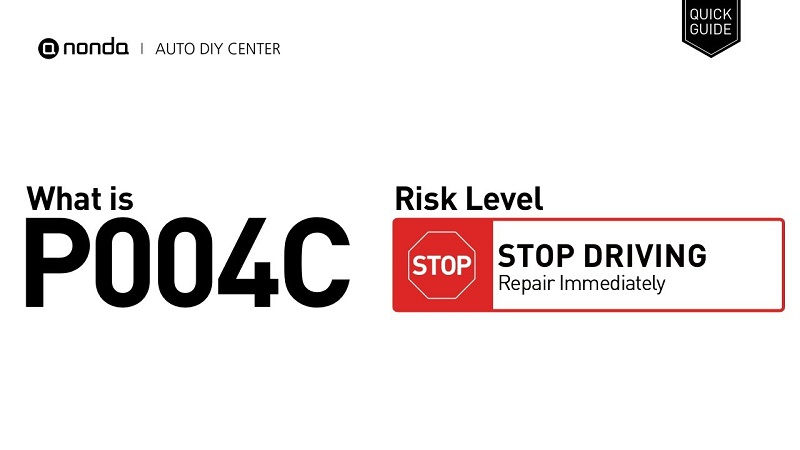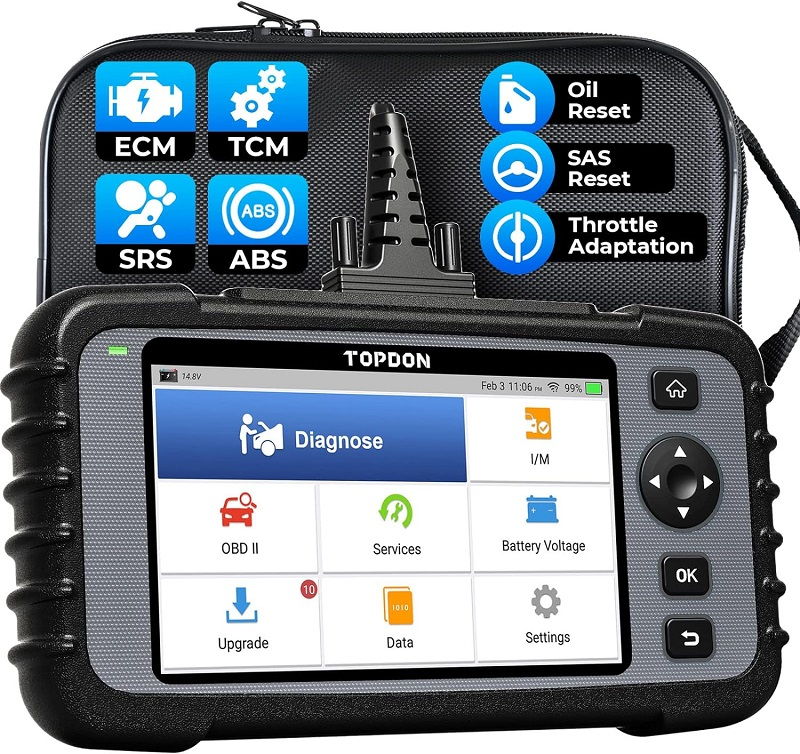This post contains affiliate links. This means I will make a commission at no extra cost to you should you click through and make a purchase [ “As an Amazon Associate, I earn from qualifying purchases.” ]. Read the full disclosure here.
Understanding the P004C Turbocharger/Supercharger Boost Control “B” Circuit Low Code GuideMechanic.Com The P004C trouble code is one that perplexes many vehicle owners and technicians alike. It specifically points to an issue with the Turbocharger or Supercharger Boost Control “B” Circuit being detected as low.
While this may sound complicated, understanding the underlying causes and implications of this code is essential for efficient diagnosis and repair.
See Also: P004A Turbocharger/Supercharger Boost Control “B” Circuit/Open
P004C Turbocharger/Supercharger Boost Control “B” Circuit Low
What Does P004C Mean?

The P004C code is an OBD-II diagnostic trouble code that indicates a problem with the turbocharger or supercharger boost control “B” circuit.
This code is typically found in vehicles equipped with turbocharged or supercharged engines, as these systems rely on precise boost control for optimal performance and efficiency.
When the engine control module (ECM) detects that the boost control circuit’s voltage or resistance is lower than the specified threshold, it triggers the P004C code and illuminates the check engine light on the dashboard. This low voltage or resistance condition can stem from various underlying issues within the boost control system.
Common Causes of P004C
Several factors can contribute to the P004C trouble code, including:
Faulty Boost Pressure Sensor:
The boost pressure sensor monitors the pressure levels in the intake manifold and communicates this data to the ECM. A malfunctioning sensor can provide inaccurate readings, leading to improper boost control and triggering the P004C code.
Boost Control Solenoid Malfunction:
The boost control solenoid is responsible for regulating the amount of boost pressure supplied to the engine. If the solenoid fails or becomes stuck in a certain position, it can result in low boost pressure and trigger the P004C code.
Vacuum Leaks:
Any leaks in the intake system, such as damaged hoses or gaskets, can disrupt the proper functioning of the boost control system.
These leaks can lead to a decrease in boost pressure, causing the ECM to detect a low boost control circuit condition and set the P004C code.
Wiring Issues:
Damaged or corroded wiring/connectors associated with the boost control circuit can interfere with the electrical signals transmitted between components. Poor electrical connections can result in low voltage or resistance readings, triggering the P004C code.
Faulty ECM:
In rare cases, a malfunctioning engine control module (ECM) can inaccurately interpret signals from the boost control system, leading to the erroneous detection of a low boost control circuit condition.
P004C Turbocharger/Supercharger Boost Control “B” Circuit Low
Diagnosing and Resolving P004C

Diagnosing the root cause of the P004C trouble code typically involves a systematic approach, including:
Code Scanning:
Using an OBD-II scanner to retrieve the trouble codes stored in the vehicle’s ECM, including P004C, and noting any additional codes present.
Visual Inspection:
Inspecting the boost control system components, including sensors, solenoids, vacuum lines, and wiring harnesses, for signs of damage, corrosion, or disconnection.
Testing Components:
Conducting specific tests, such as resistance checks on sensors and solenoids, to determine if any components are faulty or out of specification.
Check for Leaks:
Performing a boost leak test to identify any leaks in the intake system that could be causing low boost pressure.
Inspect Wiring:
Thoroughly inspecting the wiring harness and connectors associated with the boost control circuit for damage, corrosion, or poor connections.
Once the underlying issue has been identified, appropriate repairs or replacements can be made to resolve the P004C trouble code. This may involve replacing faulty sensors, solenoids, or wiring, as well as addressing any vacuum leaks or ECM-related issues.
Conclusion
See Also: P004B Turbocharger/Supercharger Boost Control “B” Circuit Range/Performance
The P004C Turbocharger/Supercharger Boost Control “B” Circuit Low code is indicative of an underlying issue within the vehicle’s boost control system.
While diagnosing and resolving this code may require a systematic approach and specialized tools, understanding the common causes and diagnostic procedures can help streamline the repair process.
Ignoring the P004C code or failing to address its underlying cause can lead to decreased engine performance, reduced fuel efficiency, and potential damage to engine components over time.
Therefore, it’s essential to promptly diagnose and resolve this code to ensure the vehicle operates optimally and reliably. By staying informed about the P004C trouble code and its implications, vehicle owners and technicians can effectively address boost control system issues and keep their vehicles running smoothly for miles to come.
- Catalytic Converter Cleaner Nearby - April 25, 2025
- BMW Catalytic Converter Price: What You Need to Know - April 24, 2025
- Scrap Catalytic Converter Price - April 24, 2025
